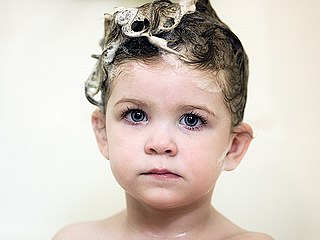
Ethylene glycol (IUPAC name: ethane-1,2-diol) is an organic compound with the formula (CH2OH)2. It is mainly used for two purposes, as a raw material in the manufacture of polyester fibers and for antifreeze formulations. It is an odorless, colorless, sweet-tasting, viscous liquid.

Polyethylene glycol (PEG; ) is a polyether compound with many applications, from industrial manufacturing to medicine. PEG is also known as polyethylene oxide (PEO) or polyoxyethylene (POE), depending on its molecular weight. The structure of PEG is commonly expressed as H−(O−CH2−CH2)n−OH.

Lanolin, also called wool yolk, wool wax, or wool grease, is a wax secreted by the sebaceous glands of wool-bearing animals. Lanolin used by humans comes from domestic sheep breeds that are raised specifically for their wool. Historically, many pharmacopoeias have referred to lanolin as wool fat ; however, as lanolin lacks glycerides, it is not a true fat. Lanolin primarily consists of sterol esters instead. Lanolin's waterproofing property aids sheep in shedding water from their coats. Certain breeds of sheep produce large amounts of lanolin.

Propylene glycol (IUPAC name: propane-1,2-diol), according to the National Library of Medicine and Agency for Toxic Substances and Disease Registry, is a synthetic liquid substance that absorbs water. It is labeled an organic compound in chemistry due to its carbon attributes. Its chemical formula is CH3CH(OH)CH2OH. It is a viscous, colorless liquid, which is nearly odorless but possesses a faintly sweet taste. Containing two alcohol groups, it is classed as a diol. It is miscible with a broad range of solvents, including water, acetone, and chloroform. In general, glycols are non-irritating, have very low volatility and very low toxicity.

Ethylene oxide, called oxirane by IUPAC, is an organic compound with the formula C
2H
4O. It is a cyclic ether and the simplest epoxide: a three-membered ring consisting of one oxygen atom and two carbon atoms. Ethylene oxide is a colorless and flammable gas with a faintly sweet odor. Because it is a strained ring, ethylene oxide easily participates in a number of addition reactions that result in ring-opening. Ethylene oxide is isomeric with acetaldehyde and with vinyl alcohol. Ethylene oxide is industrially produced by oxidation of ethylene in the presence of silver catalyst.

Stearic acid ( STEER-ik, stee-ARR-ik) is a saturated fatty acid with an 18-carbon chain. The IUPAC name is octadecanoic acid. It is a waxy solid and its chemical formula is C17H35CO2H. Its name comes from the Greek word στέαρ "stéar", which means tallow. The salts and esters of stearic acid are called stearates. As its ester, stearic acid is one of the most common saturated fatty acids found in nature following palmitic acid. The triglyceride derived from three molecules of stearic acid is called stearin.

An epoxide is a cyclic ether with a three-atom ring. This ring approximates an equilateral triangle, which makes it strained, and hence highly reactive, more so than other ethers. They are produced on a large scale for many applications. In general, low molecular weight epoxides are colourless and nonpolar, and often volatile.
A diol is a chemical compound containing two hydroxyl groups. An aliphatic diol is also called a glycol. This pairing of functional groups is pervasive, and many subcategories have been identified.

An antifreeze is an additive which lowers the freezing point of a water-based liquid. An antifreeze mixture is used to achieve freezing-point depression for cold environments. Common antifreezes increase the boiling point of the liquid, allowing higher coolant temperature.

Glycol stearate (glycol monostearate or ethylene glycol monostearate) is an organic compound with the molecular formula C20H40O3. It is the ester of stearic acid and ethylene glycol. It is used as an ingredient in many types of personal care products and cosmetics including shampoos, hair conditioners, and skin lotions.
Ethoxylation is a chemical reaction in which ethylene oxide adds to a substrate. It is the most widely practiced alkoxylation, which involves the addition of epoxides to substrates.

Moisturizer or moisturiser is a cosmetic preparation used for protecting, moisturizing, and lubricating the skin. These functions are normally performed by sebum produced by healthy skin. The word "emollient" is derived from the Latin verb mollire, to soften.

2-Butoxyethanol is an organic compound with the chemical formula BuOC2H4OH (Bu = CH3CH2CH2CH2). This colorless liquid has a sweet, ether-like odor, as it derives from the family of glycol ethers, and is a butyl ether of ethylene glycol. As a relatively nonvolatile, inexpensive solvent, it is used in many domestic and industrial products because of its properties as a surfactant. It is a known respiratory irritant and can be acutely toxic but animal studies did not find it to be mutagenic, and no studies suggest it is a human carcinogen. A study of 13 classroom air contaminants conducted in Portugal reported a statistically significant association with increased rates of nasal obstruction, the study also reported a positive association below the level of statistical significance with a higher risk of obese asthma and increased child BMI.

Ethylene glycol dimethylacrylate (EGDMA) is a diester formed by condensation of two equivalents of methacrylic acid and one equivalent of ethylene glycol.

A lotion is a low-viscosity topical preparation intended for application to the skin. By contrast, creams and gels have higher viscosity, typically due to lower water content. Lotions are applied to external skin with bare hands, a brush, a clean cloth, or cotton wool.

Dimethyl oxalate is the organic compound with the formula (CH3O2C)2. It is the dimethyl ester of oxalic acid. Dimethyl oxalate is a colorless or white solid that is soluble in water.
Olaflur is a fluoride-containing substance that is an ingredient of toothpastes and solutions for the prevention of dental caries. It has been in use since 1966. Especially in combination with dectaflur, it is also used in the form of gels for the treatment of early stages of caries, sensitive teeth, and by dentists for the refluoridation of damaged tooth enamel.

Diglycolic acid is an aliphatic dicarboxylic acid, its acidity is between the one of acetic acid and oxalic acid. It is formed in the oxidation of diethylene glycol in the body and can lead to severe complications with fatal outcome.

Shampoo is a hair care product, typically in the form of a viscous liquid, that is used for cleaning hair. Less commonly, shampoo is available in bar form, like a bar of soap. Shampoo is used by applying it to wet hair, massaging the product into the scalp, and then rinsing it out. Some users may follow a shampooing with the use of hair conditioner.
Ethylene glycol poisoning is poisoning caused by drinking ethylene glycol. Early symptoms include intoxication, vomiting and abdominal pain. Later symptoms may include a decreased level of consciousness, headache, and seizures. Long term outcomes may include kidney failure and brain damage. Toxicity and death may occur after drinking even a small amount.
















